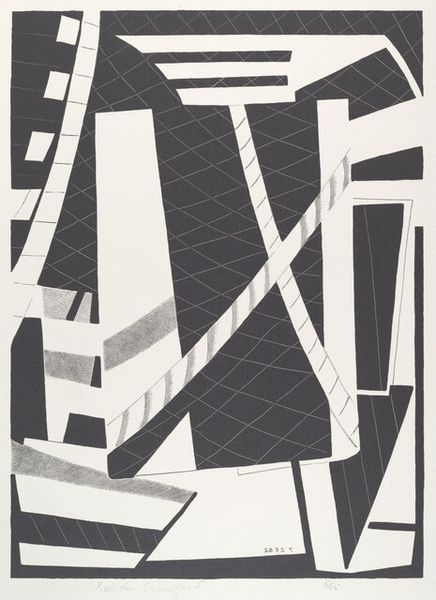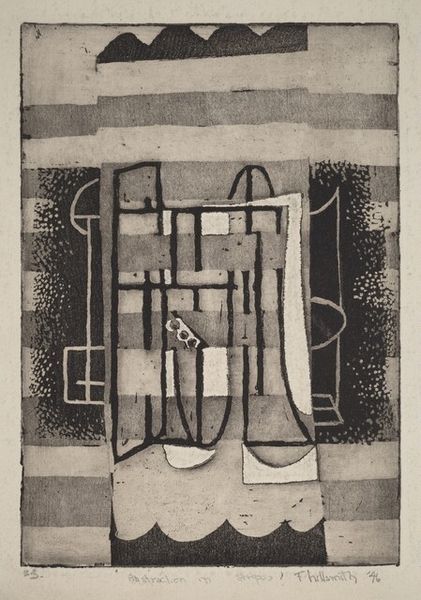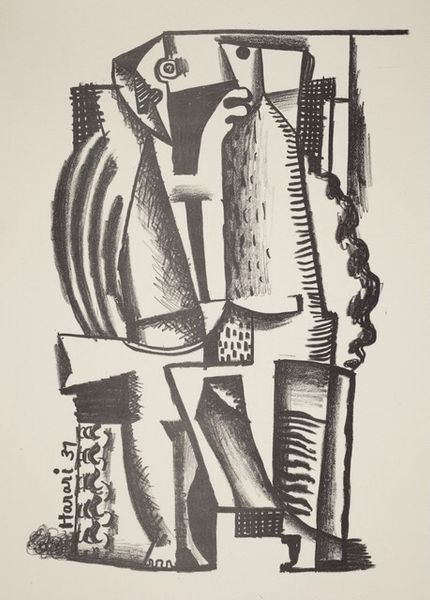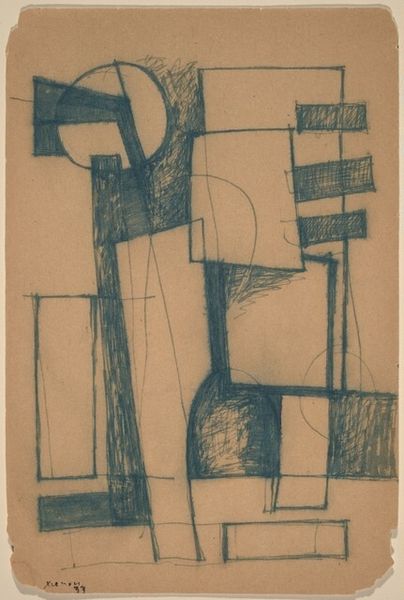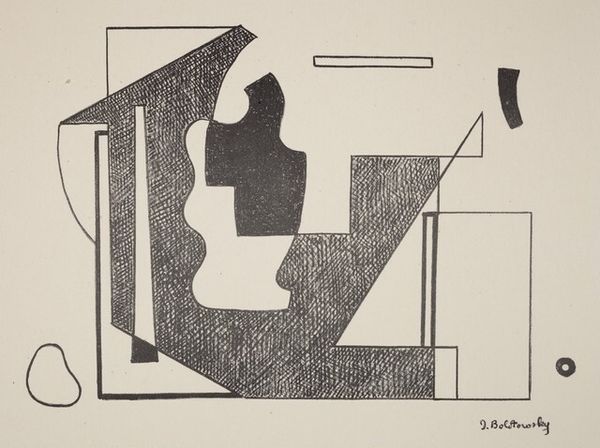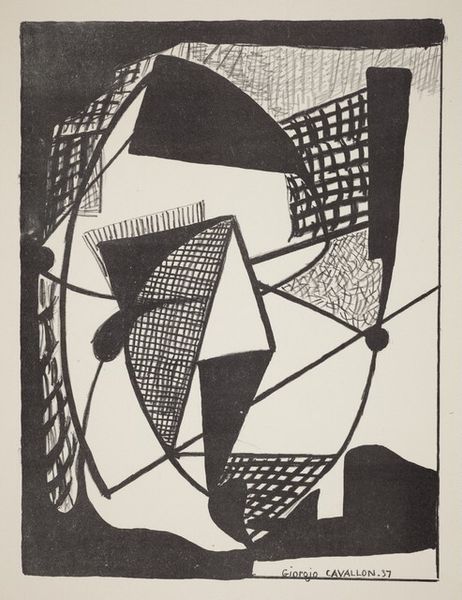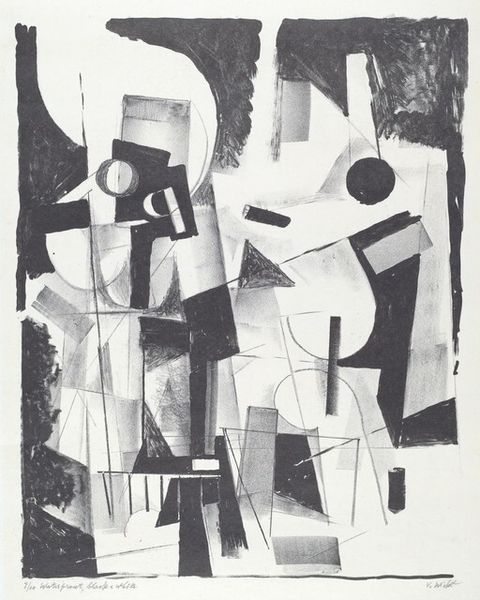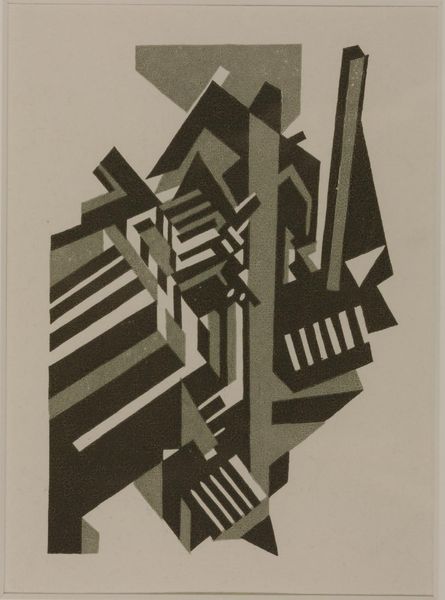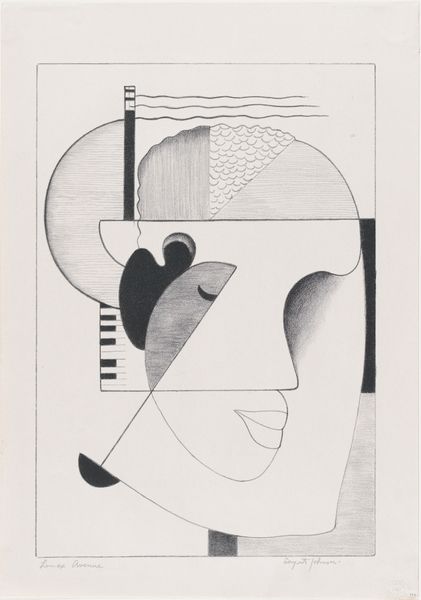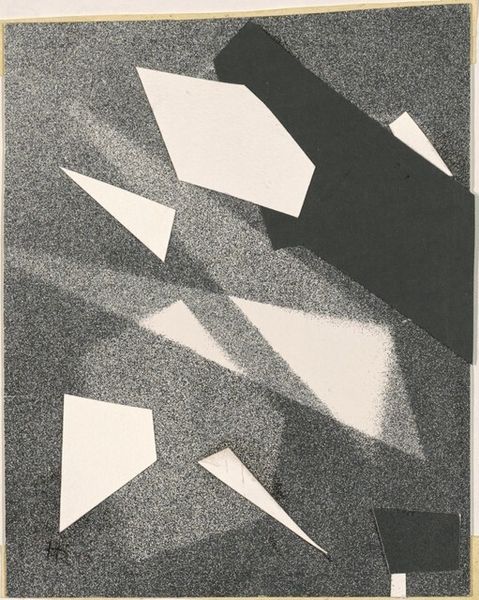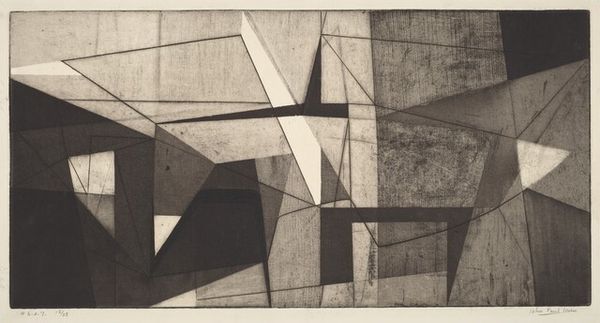
print, graphite
# print
#
constructivism
#
form
#
geometric
#
abstraction
#
line
#
graphite
Dimensions: image: 250 x 202 mm sheet: 404 x 291 mm
Copyright: National Gallery of Art: CC0 1.0
Curator: At first glance, this piece feels rather austere. The severe geometric shapes and restricted palette lend it a sense of detachment. Editor: Indeed. What we're observing is a print titled "The Letter" by William P. Hicks, created sometime between 1935 and 1940. It employs both graphite and printmaking techniques to conjure a fascinating composition of abstracted forms. Curator: I'm drawn to the almost tangible texture created by the graphite. It speaks to a deliberate process, layering and building up tones. It almost evokes the textures of the materials prevalent during this period of machine age influence. I'm seeing timber, sheet metal... Editor: You're highlighting something essential: materiality! The conscious manipulation of graphic materials positions "The Letter" within wider discussions about the role of industrial methods. These were not divorced from, but fundamental to aesthetic output. Furthermore, considering the artwork was produced during the Great Depression allows me to consider that labor as intrinsic. The geometric, Constructivist style nods towards the era's radical politics. Curator: Absolutely. The choice of abstraction, the rejection of overt representation. Do you see "The Letter" suggesting an era fraught with socioeconomic unrest and social stratification? Perhaps the geometric shapes allude to the compartmentalization of experience. Editor: I find your point intriguing. As abstraction defies narrative, it indirectly alludes to hidden experiences. Here the use of solely stark, black and white geometry gives it a documentary, visual-record type of austerity; devoid of frivolity. The lack of color is quite profound when considering themes of identity within visual activism. It reminds the viewer how clear visual records of people of color were being omitted. Curator: "The Letter" embodies its moment and raises ongoing important questions. The choice to use readily available material means to present this imagery evokes those challenges effectively. It offers an interesting, multi-layered reading. Editor: A letter contains layers, revealing some things and keeping others intentionally out of view. And those elements, present or absent, speak volumes about who had the power to communicate, and who didn't. Thank you.
Comments
No comments
Be the first to comment and join the conversation on the ultimate creative platform.
